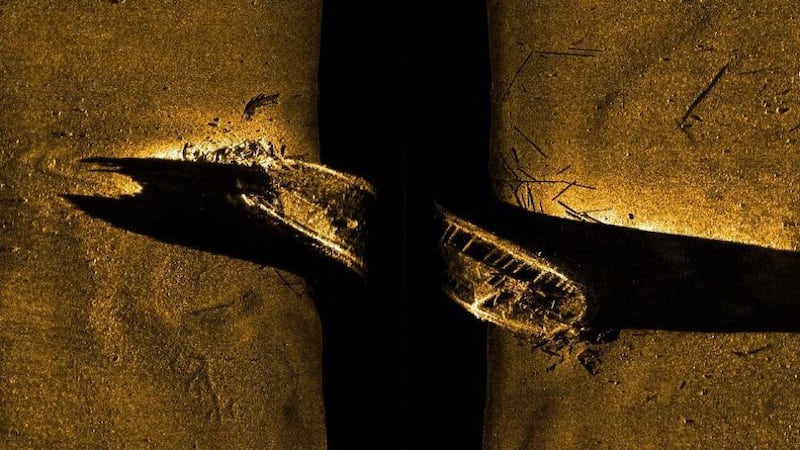The towns of Banbridge, Dundalk and Wexford are the birthplaces of three of the legendary figures in the history of Arctic exploration – Francis Crozier, Francis McClintock and Robert McClure. Their careers in the British navy were distinguished by heroic feats in exploring of these hazardous, frozen wastes.
They were particularly linked with a tragedy that occurred from efforts to locate a channel through the ice-bound Arctic that might connect the Atlantic and the Pacific oceans. It was called the Northwest Passage and finding it became an obsessive ambition for the British Admiralty.
Some of the eagerness to discover such a route was driven by the possibility of it becoming a shortcut for shipping trade from Europe to the Far East.
Crozier was born in 1796, McClure in 1807 and McClintock in 1819. They came from well-to-do families associated with the British administration in this country.
All three joined the British navy in their early youth and advanced their careers by their marked abilities and devotion to duty.
These explorers and their hardy crews traversed regions unknown to anyone except the small groups of Inuit people who had learned to exist in these lands that were mostly covered in snow and ice.
When after two years nothing whatsoever was heard of them, the British Admiralty and public became anxious about their fate
As their small wooden ships probed along uncharted waters they had to steer clear of massive moving icebergs that loomed over them. The most pressing anxiety of all was the fear of their vessels becoming permanently trapped in the pack-ice, or worse still, being crushed by its power.
Crozier joined three Arctic expeditions. While none found the Northwest Passage much knowledge was gained of coastlines and islands in the region. His reputation was such that in 1845 he was made second in command of another attempt. It was led by Sir John Franklin on a ship called the Erebus, while Crozier was in command of a second vessel the Terror.
The party was made up of 24 officers and 110 men. Of the crew there were three Irishmen, including William Pilkington from Kilrush, Co Clare, and John Daly from Tubberclare, Co Westmeath, both from a company of marines who ensured order on the vessels. The third was Cornelius Hickey, from Limerick, a caulker's mate who had a key role to seal seepage between the wooden planks.
It was taken for granted that the ships could be away for a long time. However, when after two years nothing whatsoever was heard of them, the British Admiralty and public became anxious about their fate.
Prompted by the urgings of Lady Franklin, a woman of determined character, the Admiralty from 1848 undertook several searches. Robert McClure joined two of these.
They were unsuccessful but he played a leading role in mapping vast areas of frozen sea and land.

From 1850 onwards traces of the lost venture began to be found, including three graves on a stony beach and fragments of naval stores, personal items and meat tins.
Then in 1854 some Inuits told the Orkney surveyor and explorer John Rae of men struggling along on foot in poor condition, starving and dying. He was shown a medal and silverware that could only have come from the Franklin expedition. Rae's report pointed to the expedition's fate, although its dependence on the hearsay of the Inuit was not well received in Britain.
The Admiralty decided that no further searches were worth the risk and the cost.
However, the redoubtable Lady Franklin wanted more concrete evidence and knowledge of her husband’s lost expedition.
She raised the money to mount another expedition in 1857. She persuaded Francis McClintock, an Arctic explorer of repute, to take charge of a small ship called Fox with a crew of 25 men. It was a gruelling search. The vessel was trapped in ice for long periods over two years.
However, McClintock, a man of exceptional resolve, hired sled dogs and an Inuit guide to search the region where the Franklin expedition seemed to have perished.
In a cairn of stones they uncovered the most significant find of all, a metal container that held a written report dated May 1847 by one of Franklin’s officers. It said that both ships had been abandoned having been trapped in ice, that Franklin and 24 others had died and that Crozier was leading a party of survivors on foot southwards towards more hospitable land.
Later McClintock’s search found the remains of camps and a boat that was being used as a sledge and a shelter. Most of the story of the tragedy had now been confirmed.
Large cargo ships, usually with strengthened hulls, are starting to push their way through the broken ice to make trading between the Far East and Europe easier and faster
When McClintock returned to Britain he received much public acclaim and was awarded a knighthood.
By then the Northwest Passage had been identified but was so ice-bound that its significance was diminished.
In the many intervening years more relics have come to light. The Erebus was discovered in 2014 by Canadian marine archaeologists using a sonar device. The wreck lies in shallow waters and has been thoroughly examined by divers.
Today the Northwest Passage is no longer an impassable route. Global warming and the steady weakening of the ice-pack has opened it to tourist vessels during the summer months. Large cargo ships, usually with strengthened hulls, are starting to push their way through the broken ice to make trading between the Far East and Europe easier and faster. Sophisticated satellite systems facilitate navigation.
Yet the paperless charts coming into use still owe something to the intrepid explorers of the 19th century who risked and sometimes lost their lives.









